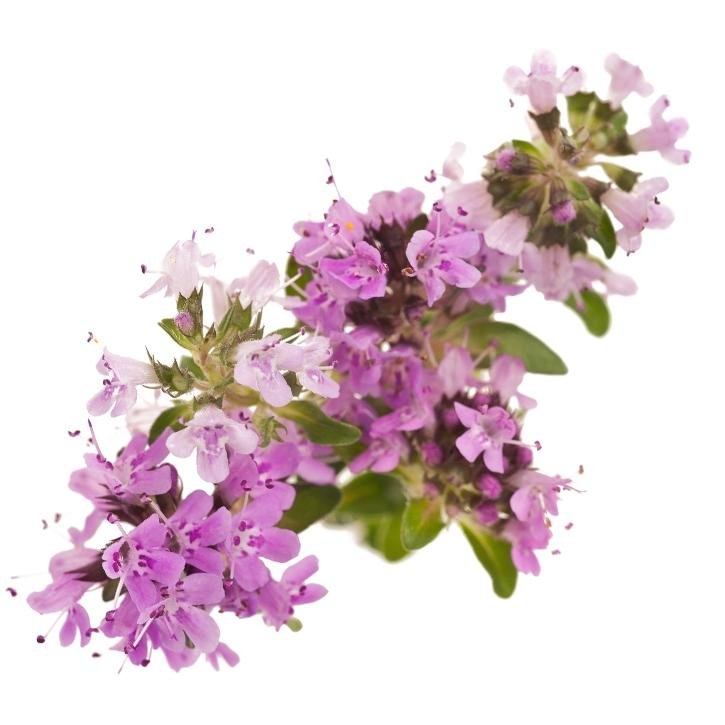It starts blooming in May. There are many species of wild thyme with different morphological characteristics, therefore describing all of them would be very complicated. The most relevant characteristic is the scent of their leaves and flower apex. Its effectiveness and quality vary from one lineage to the other, in some of them we can find an agreeable scent similar to lemon or lemon balm.
Origin: The species is distributed nearly all Europe; the commercial drug comes mainly from Eastern Europe countries.
Habitat and cultivation: Dry and arid lands, sandy or stony ground, low land or hills and mountain slopes up to
Part used
Indications
External use
Bibliography
- British Herbal Pharmacopoeia, 1983.
- Plantas Medicinales. Thérapeutique-Toxicité. Christiane Vigneau. Masson, Paris 1985.
- Herbal Drugs and Phytopharmaceuticals. Norman Grainger Bisset (Ed). Max Wichtl. CRC Press.1994.
- Plantas Medicinales y Drogas Vegetales para infusión y tisana. Edición española a cargo de: Salvador Cañogueral, Roser Vila, Max Wichtl.1998.
- Matière Médicale. RR Paris- H. Moyse. Masson 1981.
- Fitoterapia: Vademecum de Prescripción. Plantas Medicinales. Colaboran: Asociación española de médicos naturistas. Colegio Oficial de Farmacéuticos de Vizcaya.
- Plantas Medicinales. El Dioscórides Renovado. Pio Font Quer.
- Guía de Campo de las Flores de Europa. Oleg Polunin. Ediciones Omega S.A. Barcelona, 1977.
- Plantas Medicinales. Margarita Fernandez y Ana Nieto. Ed Universidad de Navarra. EUNSA 1982.
-The Complete German Commission E Monographs. Therapeutic Guide To Herbal Medicines. Mark Blumenthal. American Botanical Council 1998.
- Fitoterapia Aplicada. J.B. Peris, G. Stübing, B.Vanaclocha. Colegio Oficial de Farmacéuticos de Valencia 1995.
- Bézanger-Beauquesne, L; Pinkas, M; Torck, M. Les Plantes dans la Therapeutique Moderne. 2ª. Paris: Maloine, 1986, pp. 418-9.
- Bézanger-Beauquesne, L; Pinkas, M; Torck, M; Trotin, F. Plantes Médicinales des Regions Tempérées. Paris: Maloine, 1980, p. 344.
- Bruneton, J. Elementos de Fitoquímica y Farmacognosia. Zaragoza: Acribia, 1991, p.254.
- Rivera, D; Obón, C. La Guía Incafo de las Plantas Útiles y Venenosas de la Península Ibérica y Baleares. Madrid: Incafo, 1991, pp.135; 871-2.
- Trease, GE; Evans, WCh. Farmacognosia. México D.F.: Interamericana--MacGraw-Hill, 1991, p. 465.
- Van Hellemont, J. Compendium de Phytotherapie. Bruxelles: Association Pharmaceutique Belge, 1986, pp. 396-7.
- Villar, L; Palacín, JM; Calvo, C; Gómez, D; Montserrat, G. Plantas Medicinales del Pirineo Aragonés y demás tierrras oscenses. 2ª. Huesca: Diputación Provincial, 1992, p. 233.
